Beyond the well-known landmarks, lies a hidden treasure trove of the coolest and most unusual spots waiting to be discovered. Embark on a journey like no other as we unveil the top 10 extraordinary destinations that offer a different perspective on the Eternal City. From ancient catacombs and secret gardens to intriguing museums and offbeat neighborhoods, this curated list will lead you off the beaten path, immersing you in the lesser-known, yet captivating, wonders of Rome. Get ready to explore a side of the city that few get to experience and create memories that will last a lifetime.
Top 10 Coolest and Unusual Spots to visit in Rome
1. The Museum of the Souls of Purgatory
Type: Museum
Location: Lungotevere Prati
The Museum of the Souls of Purgatory in Rome is a hauntingly unique and lesser-known gem that beckons the curious traveler. Housed within the Chiesa del Sacro Cuore del Suffragio, this museum holds an eerie collection of artifacts associated with the belief in Purgatory. Visitors will encounter charred handprints, singed clothing, and eerie imprints left by souls seeking prayers from the living to expedite their journey to heaven. The somber ambiance evokes a sense of contemplation and introspection, making it a one-of-a-kind experience for those fascinated by the intersection of art, history, and spirituality. The Museum of the Souls of Purgatory offers an enigmatic glimpse into the eternal mysteries of the afterlife.
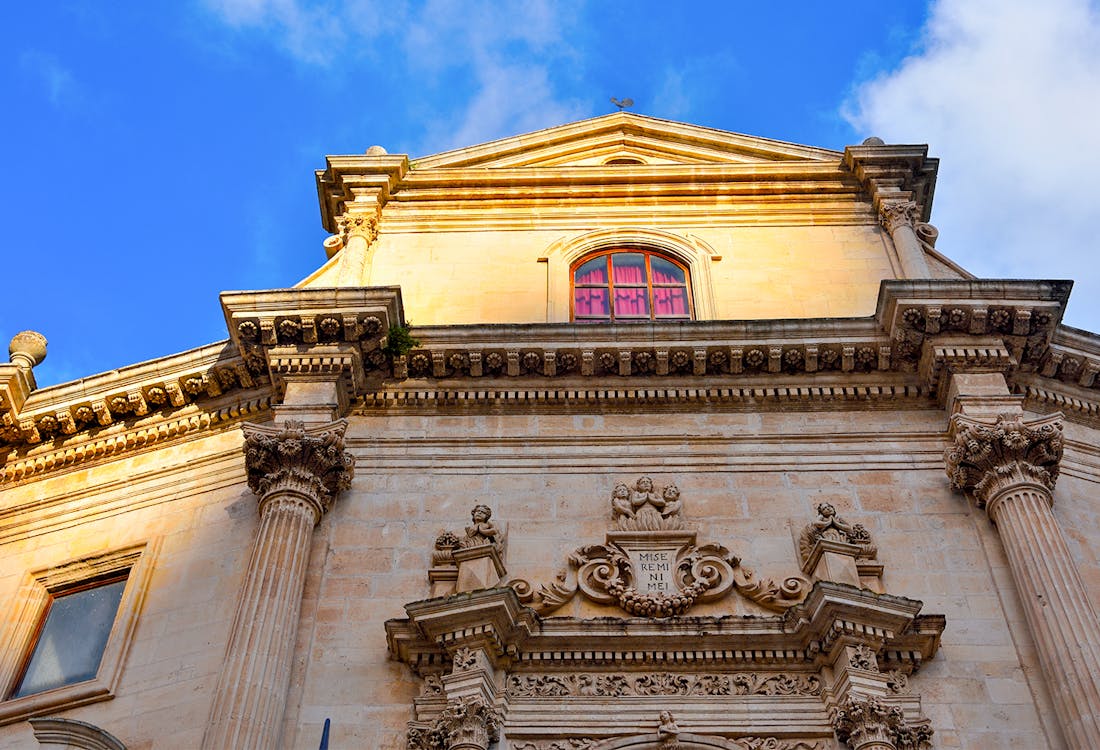
Quick Facts
- The Museum of the Souls of Purgatory owes its existence to a strange fire incident in 1897.
- One of the most chilling exhibits at the museum is the collection of "burnt hand" imprints. These handprints are said to be the mark left by deceased souls reaching out from Purgatory to communicate with the living.
- The mysterious and somber ambiance of the Museum of the Souls of Purgatory has inspired various artists, writers, and filmmakers over the years.
2. Feral Feline Colonies of Torre Argentina
Type: Cat Sanctuary
Location: Largo Arenula
Amidst the ancient ruins of Largo di Torre Argentina in Rome lies an unexpected and heartwarming sanctuary - the Feral Feline Colonies of Torre Argentina. Home to hundreds of cats, this unique site serves as a safe haven for abandoned and stray cats. Managed by dedicated volunteers, the colonies provide regular food, medical care, and a loving environment for these furry inhabitants. Visitors can witness a heartwarming display of coexistence as cats roam freely among the historical structures, creating a charming blend of ancient history and compassionate care.
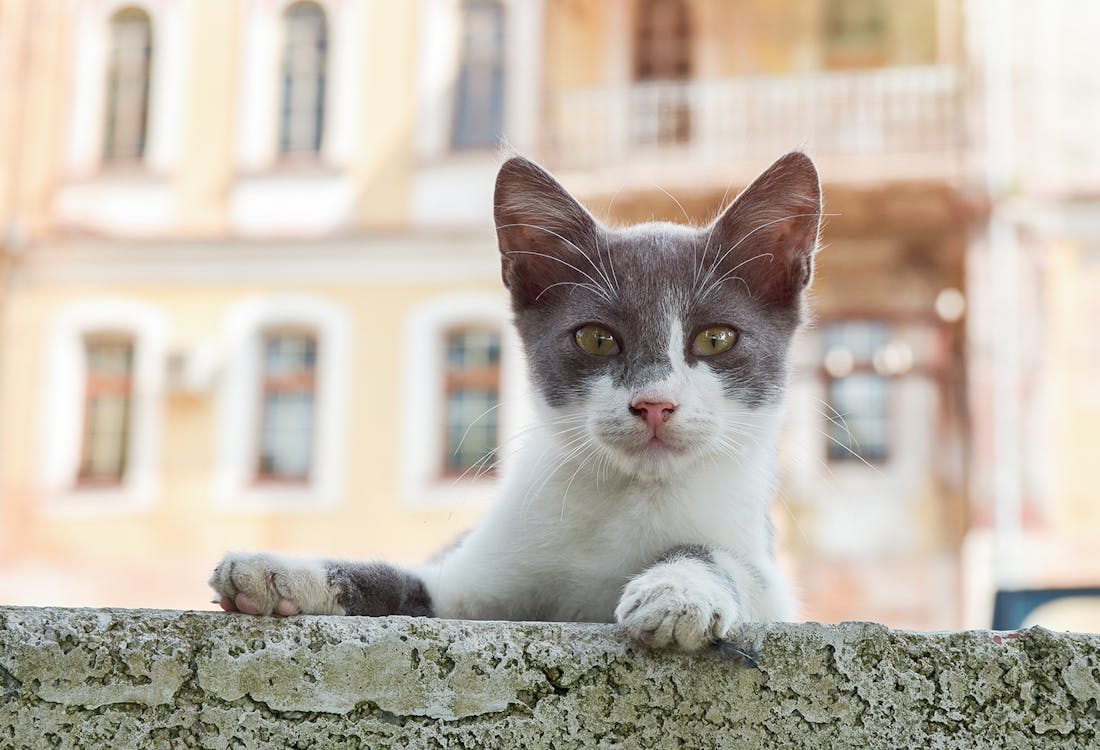
Quick Facts
- During a restoration project in 1929, excavations unearthed four ancient Roman temples buried beneath the site.
- Besides providing a safe haven for feral cats, the Torre Argentina Cat Sanctuary runs adoption programs to find loving homes for friendly and rehabilitated felines.
- The Feral Feline Colonies at Torre Argentina are entirely run by dedicated volunteers who selflessly give their time and effort to care for the cats.
3. St. Valentine's Skull
Type: Unusual Relic
Location: Basilica di Santa Maria
Deep within the Basilica di Santa Maria in Rome lies a captivating and lesser-known relic - the skull of St. Valentine. Encased in an ornate reliquary, the sacred relic is displayed for veneration and adoration by devoted pilgrims and visitors alike. St. Valentine, the patron saint of love and affection, holds a special place in the hearts of many, and this holy site offers a unique opportunity to pay homage to his memory. As visitors marvel at the Basilica's grandeur, they are also reminded of the enduring power of love and the timeless legacy of this revered saint, making it a truly memorable and spiritual experience.

Quick Facts
- Every year on February 14th, in celebration of Valentine's Day, the Basilica di Santa Maria holds a special ceremony where the relic of St. Valentine is brought out for public veneration and blessing.
- According to local belief, the relic of St. Valentine at the Basilica di Santa Maria possesses healing powers.
- Devotees who wish to witness the relic must inquire with the church authorities or participate in the special ceremony on Valentine's Day, providing a sense of exclusivity to the experience.
4. Domus Aurea
Type: Archaeological museum
Location: Viale Serapide
The Domus Aurea, Latin for "Golden House," is a magnificent and historically significant architectural marvel in Rome. Built by Emperor Nero after the great fire that devastated the city in 64 AD, the Domus Aurea was a palace that showcased the grandeur of the Roman Empire. It boasted vast gardens, frescoed rooms, and innovative architectural features that were ahead of its time. However, after Nero's death, the palace fell into disrepair and was later covered up to construct other structures. Rediscovered during the Renaissance, its artistic influence had a profound impact on the development of Roman art and architecture, making it a crucial archaeological site and a testament to Rome's glorious past.
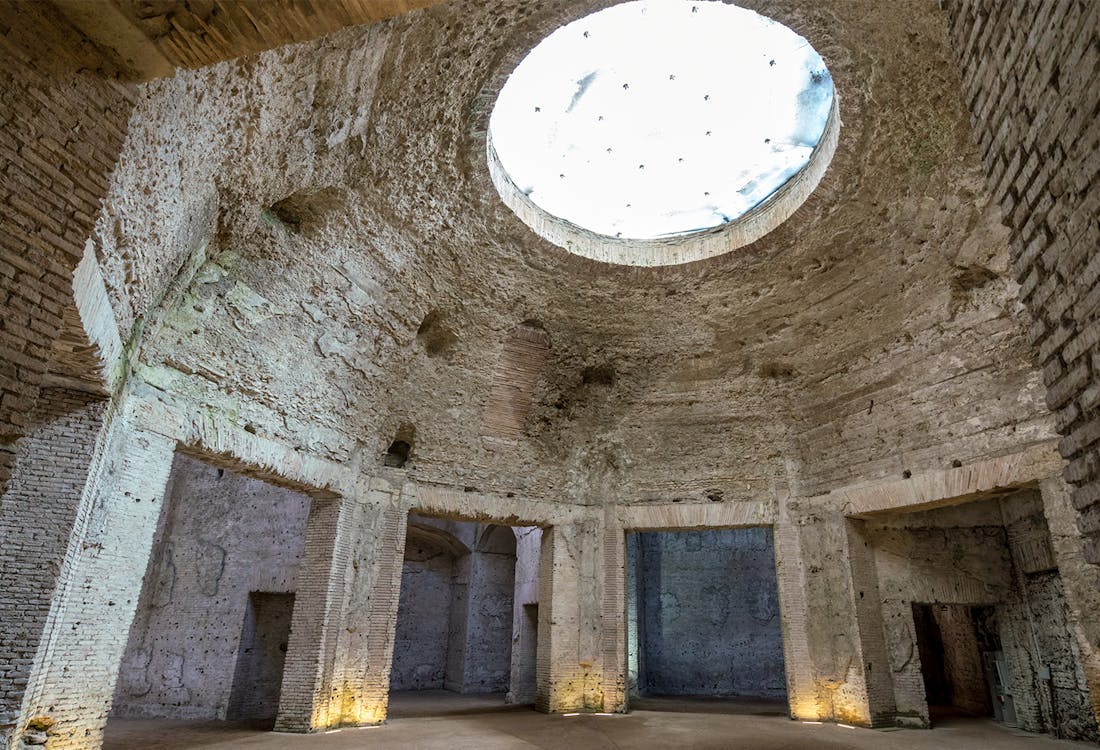
Quick Facts
- The Domus Aurea featured an innovative rotating dining room, also known as a "revolving ceiling," which allowed guests to enjoy different views of the surrounding gardens and landscapes during their meals.
- Renaissance artists, including Raphael and Michelangelo, visited the site and were inspired by its ornate frescoes and intricate designs.
- A young Roman accidentally stumbled upon the buried ruins while exploring underground grottoes on the Esquiline Hill, leading to the eventual uncovering and preservation of this grand architectural treasure.
5. The Water Clock at Villa Borghese
Type: Unusual Clock
Location: Villa Borghese
The Water Clock at Villa Borghese is an intriguing and lesser-known attraction in Rome. Designed in the 18th century, this unique timekeeping device combines artistry and engineering. The clock utilizes water and gravity to measure time accurately, showcasing the brilliance of its era's scientific achievements. As water flows through intricately crafted mechanisms, visitors are treated to a captivating display of precision and beauty. Amidst the lush greenery of Villa Borghese, this remarkable historical timepiece stands as a testament to human ingenuity, providing a serene and thought-provoking experience for those who venture to discover its hidden charm.
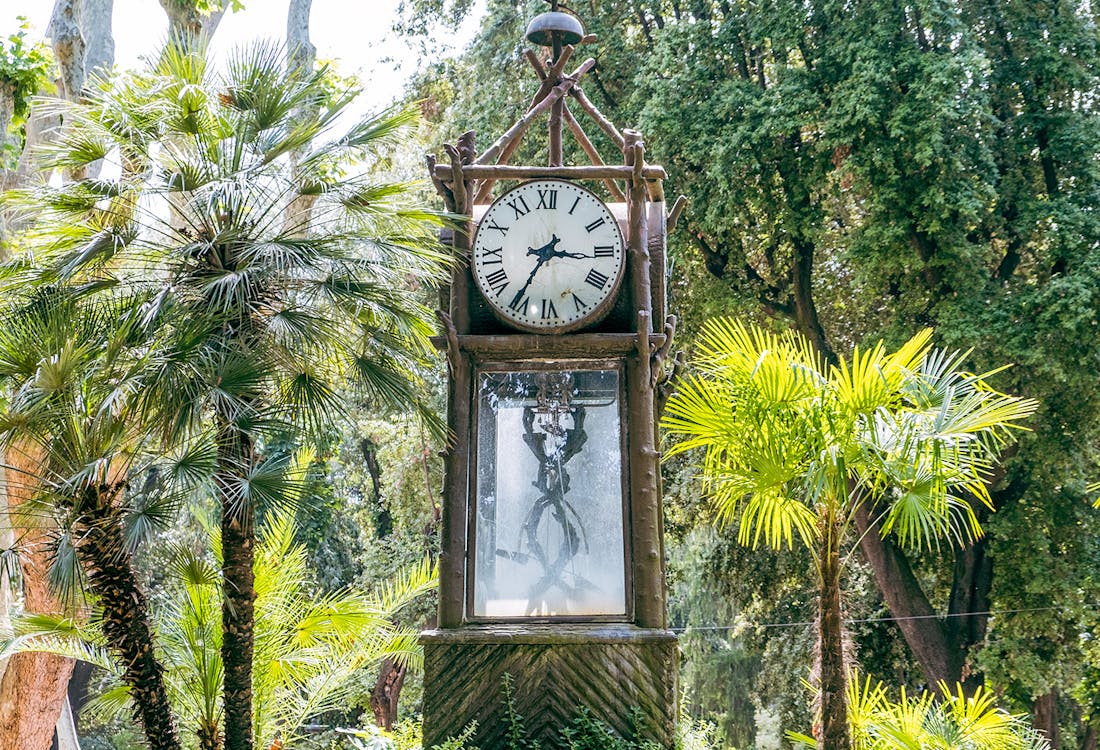
Quick Facts
- The clock's use of water represents the continuous flow of time, while the marble sculptures adorning the clock symbolize the four seasons - spring, summer, autumn, and winter.
- In the past, the Water Clock at Villa Borghese served as a popular meeting spot for locals.
- Over the years, the Water Clock suffered from neglect and damage, falling into a state of disrepair. However, in recent times, the clock has been carefully restored and preserved by dedicated conservators.
6. Casina delle Civette
Type: Museum
Location: Villa Torlonia
The Casina delle Civette, or "House of the Owls," is one of the coolest structures you'll see in Rome. Originally designed as a Swiss-style chalet in the early 20th century, this enchanting structure underwent several transformations under different owners, including Mussolini. Today, the Casina delle Civette houses a fascinating museum dedicated to decorative arts, showcasing intricate stained glass windows, charming ceramics, and captivating mosaics. Its whimsical and eclectic design, coupled with its serene setting, creates an immersive experience.

Quick Facts
- The name "Casina delle Civette" or "House of the Owls" comes from the numerous owl-themed decorations found throughout the building.
- Casina delle Civette is a prime example of Art Nouveau architecture in Rome. It showcases the artistic and decorative style that flourished in the late 19th and early 20th centuries, characterized by its focus on natural forms and fluid lines.
- Despite its enchanting appearance, Casina delle Civette holds a tragic history. During World War II, the villa and its surroundings suffered significant damage. The Torlonia family was forced to leave, and the villa was used as a military hospital.
7. Vicus Caprarius
Type: Underground City
Location: Vicolo del Puttarello
Vicus Caprarius, also known as the "City of Water," is an archaeological gem located beneath the bustling streets of Rome. Discovered during excavations in the 1990s, this ancient site was once a thriving commercial area with shops and dwellings. It derives its name from the Latin term for "Goat Keepers," likely due to the nearby presence of a statue depicting a she-goat nursing the twin founders of Rome, Romulus, and Remus. Visitors can explore the well-preserved remains of this ancient neighborhood, including ancient Roman plumbing and a magnificent underground water cistern.
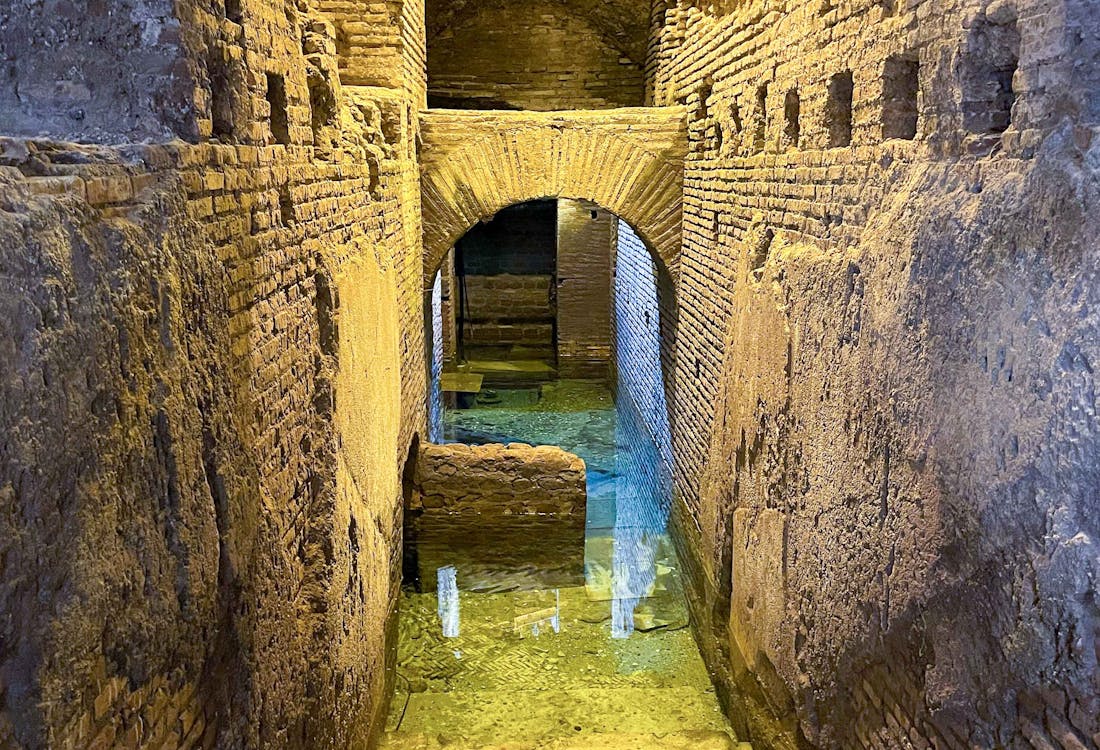
Quick Facts
- The cistern's construction showcases the advanced engineering skills of ancient Roman architects, and its preservation allows visitors to witness the intricate system that sustained life in the bustling neighborhood.
- It is believed to be the location where the legendary twin brothers, Romulus and Remus, were discovered by the she-wolf who nursed and cared for them.
- During the Middle Ages, Vicus Caprarius served as a secret escape route for Pope Nicholas III.
8. Porta Alchemica
Type: Monument
Location: Piazza Vittorio Emanuele II
Porta Alchemica, or the "Alchemical Door," is a mysterious and enigmatic structure located in the heart of Rome. Believed to be the only surviving alchemical monument in the city, it dates back to the 17th century and was created by Massimiliano Palombara, a prominent alchemist of his time. The door is adorned with esoteric symbols and inscriptions, shrouding its true purpose in secrecy. Some believe it to be an entrance to hidden knowledge or an alchemical laboratory, while others consider it a symbolic portal to transcendence.

Quick Facts
- Despite being an intriguing and historically significant structure, Porta Alchemica remains relatively hidden and lesser-known to tourists.
- One of the notable symbols adorning Porta Alchemica is the seven-pointed star, also known as the "Heptagram." This symbol holds significance in alchemy, representing the seven traditional planets and the stages of the alchemical process.
- The door is covered in intricate alchemical inscriptions, some of which are coded and difficult to decipher. These inscriptions are believed to contain hidden messages and esoteric knowledge related to alchemy and mystical practices.
9. Servian Wall at McDonald's
Type: Ruin
Location: McDonald's Roma Termini
The Servian Wall, an ancient Roman defensive fortification dating back to the 4th century BC, might seem like an unlikely sight to encounter at a McDonald's restaurant in Rome. Yet, as part of a unique collaboration between preservation and modernity, a section of the Servian Wall has been incorporated into the design of a McDonald's outlet. This blending of historical heritage and contemporary convenience creates an extraordinary dining experience where patrons can enjoy their meals while marveling at ancient Roman history.
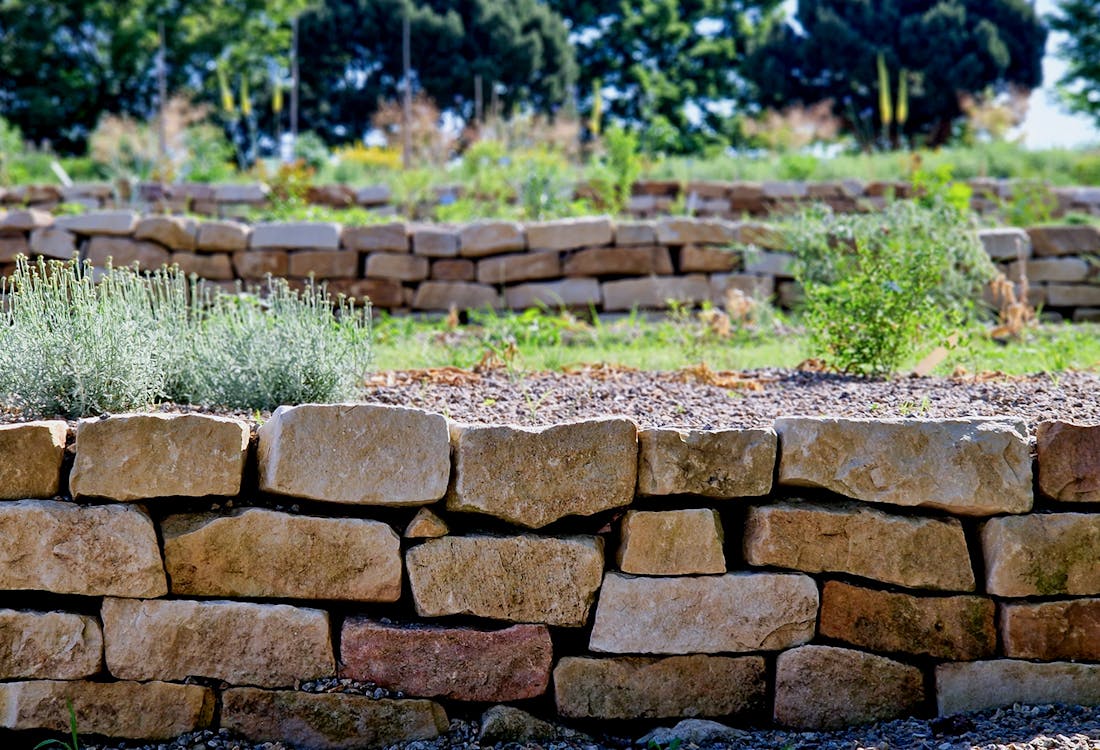
Quick Facts
- The presence of the Servian Wall at the McDonald's site was not initially known until the construction process began.
- Special measures were taken to ensure that the historical structure remained intact and visible to patrons while maintaining the building's stability and safety.
- To enrich the dining experience, the McDonald's restaurant features an interactive display near the Servian Wall. The interactive exhibit allows you to learn about the historical significance of the site while enjoying your meals, making it a unique and educational dining experience.
10. The Capuchin Crypt
Type: Crypt
Location: Church of Santa Maria della Concezione dei Cappuccini
The Capuchin Crypt, located beneath the Church of Santa Maria della Concezione dei Cappuccini in Rome, is an eerie attraction. Dating back to the 17th century, the crypt serves as the final resting place for over 4,000 Capuchin friars. What sets this crypt apart is its hauntingly artistic decor, where the skeletal remains of the deceased friars are arranged in macabre displays. Adorned with bones, skulls, and even entire skeletons, the crypt's intricate designs and somber ambiance will leave you in awe and contemplation. It serves as a poignant reminder of life's impermanence and has intrigued visitors for centuries, making it a morbidly fascinating destination in Rome.
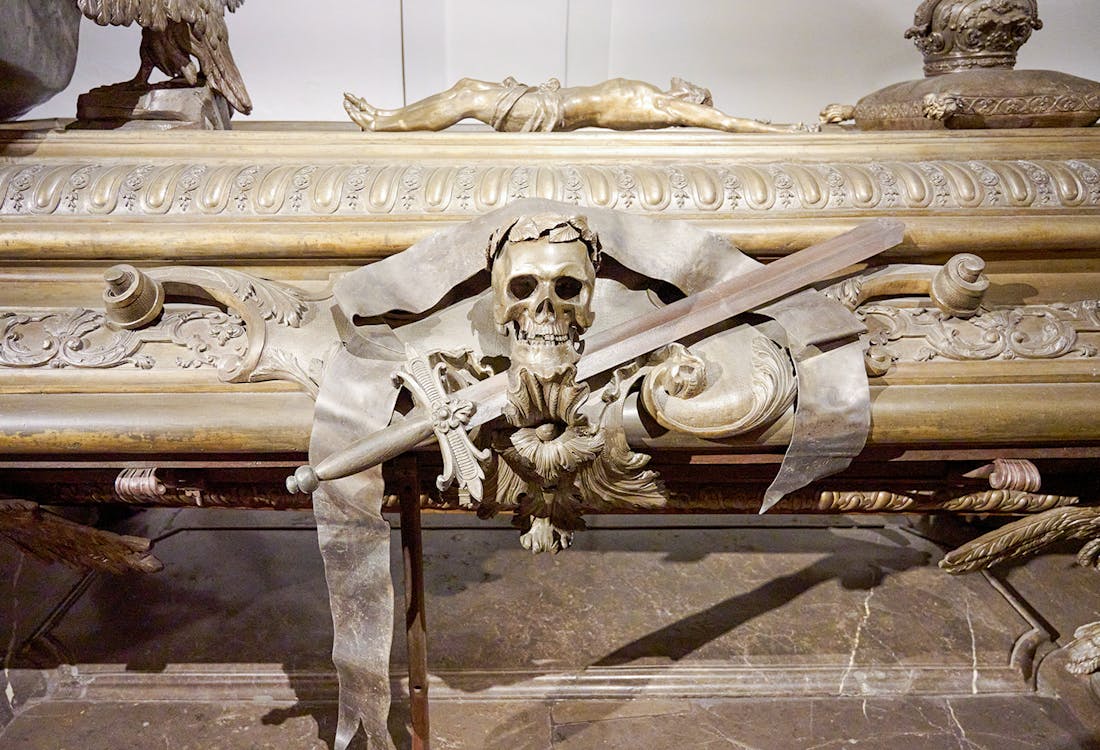
Quick Facts
- The skeletons and bones are meticulously organized to represent the cycle of life, death, and resurrection.
- To protect the delicate skeletal remains and maintain the crypt's unique aesthetic, the friars regularly replace the rotting robes of their deceased brethren, ensuring that the remains are carefully handled and presented with respect.
- The Capuchin Crypt has inspired various artists and writers over the centuries. Notably, the crypt's surreal and eerie ambiance influenced Edgar Allan Poe's short story "The Cask of Amontillado".


